There’s visible improvement in the January 1942 issue of Black Mask. More pages, for a start. 128 pages excluding the covers, and a readable font. There are nineteen pages of ads, so actual fiction is around 112 pages. One more story than the Ellsworth era issue we saw recently. The price is the same, fifteen cents, a nickel more than Dime Detective or Munsey’s Detective Fiction. It’s still being printed at the Cuneo Press, Chicago.
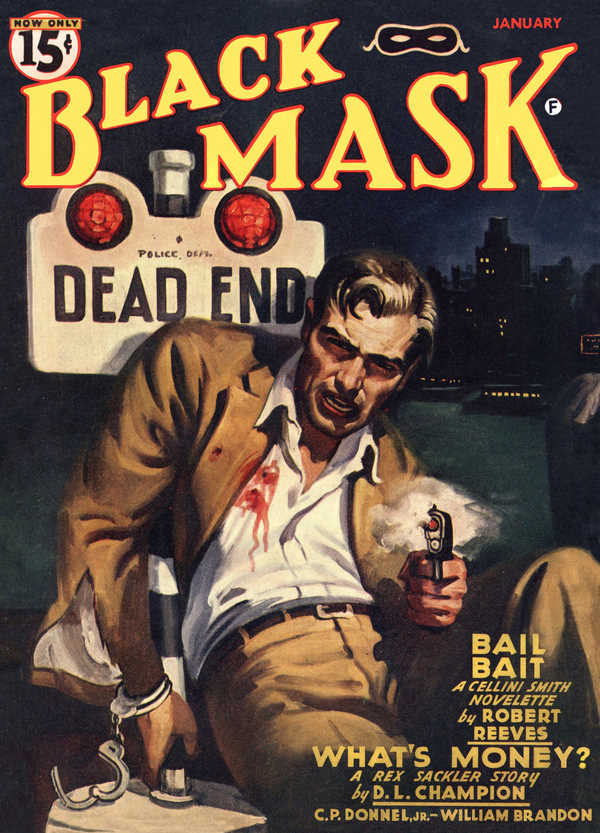
The cover art by Milton Luros is striking; one of the infrequent times when the cover features a left-hander. My major complaint is that when you see it side by side with the Dime Detective cover for the same month, it looks duller. And it’s costlier. Even though Black Mask has 16 pages more than Dime Detective, it doesn’t feel like a bargain.
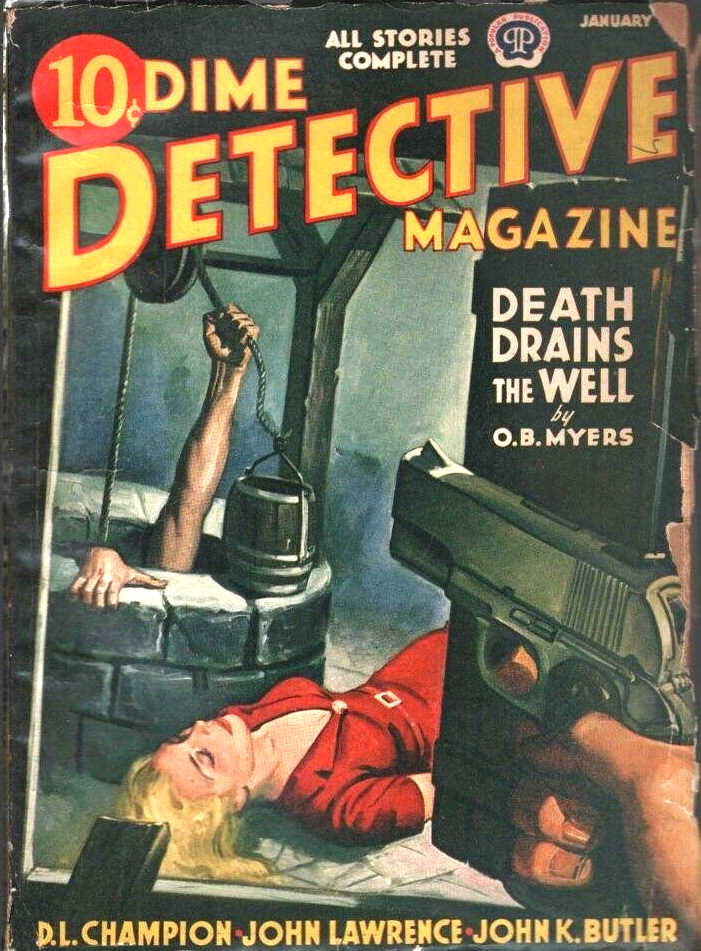

Another oddity is the inclusion of William Brandon’s name on the cover, though he doesn’t appear in the issue. A Brandon story was present in the February 1942 issue; perhaps it had to be bumped from this issue at the last minute. Was Ken White stressed out by editing both magazines? Did quality suffer? Do the contents justify the higher price? Let’s find out.
The Stories
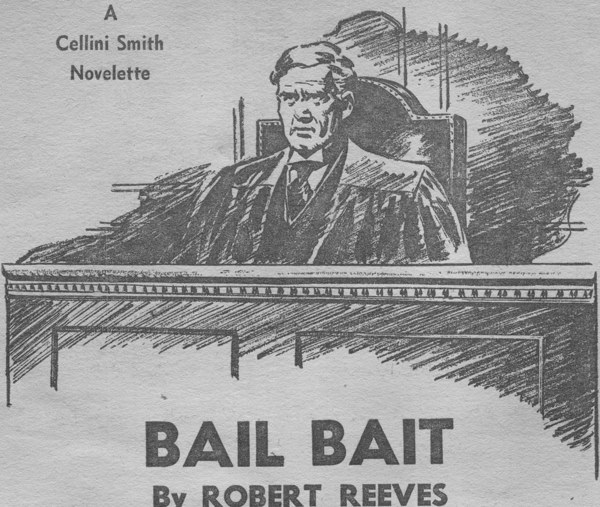
Bail Bait by Robert Reeves (about whom more in a later post) is the lead story, a substantial novella at nearly thirty pulp size pages. It begins with a man trying to bribe the judge to let a safebreaker caught with fingerprint and eyewitness evidence.
The next scene shows the judge walking to his bench, where he listens to the evidence and dismisses the case, surprising everyone in the courtroom. It turns out there was a man with a gun under the judge’s desk, and the judge had to let the safebreaker go or get shot. There are more hardboiled twists and comic turns before the climax where Reeves pulls out the classic trope of the great detective calling all the suspects together to solve the case and point out the criminal. Good. Not collected, yet.
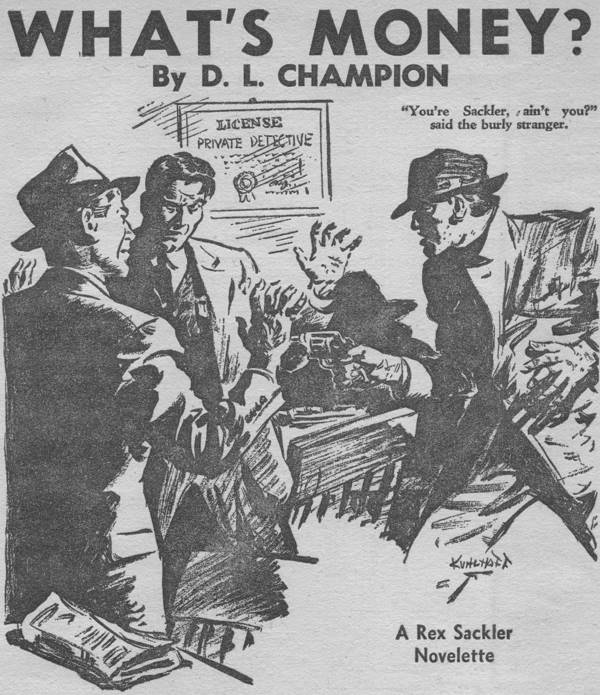
What’s Money by D. L. Champion features one of Champion’s two best creations, Rex Sackler. The series moved from Detective Fiction Weekly to Black Mask in 1940. I guess Ken White was prepared to offer Champion more for a series that would be a good crowd-puller for the new Mask.
Sackler’s cases are narrated by his secretary, Joey, who he pays as little as possible. Sackler banks on his secretary’s gambling addiction to win his salary back as quickly as possible. The result: The secretary roots for Sackler to fail on the case so that he receives no money from the client.
Through a concatenation of circumstances, Sackler finds himself compelled to bail out Joey with a bond of ten thousand dollars. This means that Joey, alive, is now worth ten thousand dollars to Sackler, who will have to pay the bond if Joey is kidnapped or killed. I kept chuckling as I read the story, which gets a full five star recommendation from me.
Champion’s other great creation, legless and bitter Inspector Allhoff, ranted his way through the pages of Dime Detective. Both series are being collected by Steeger books. Click on pictures for links
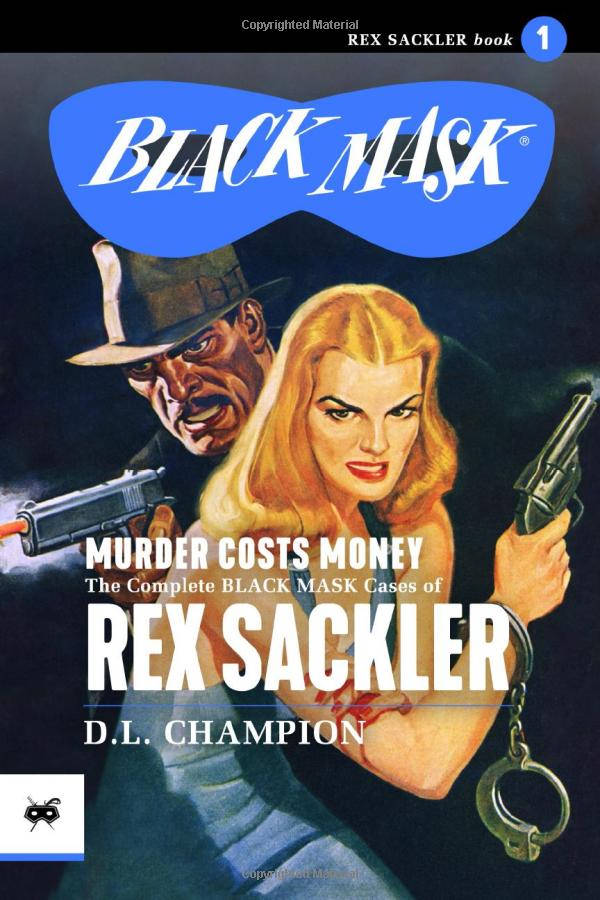
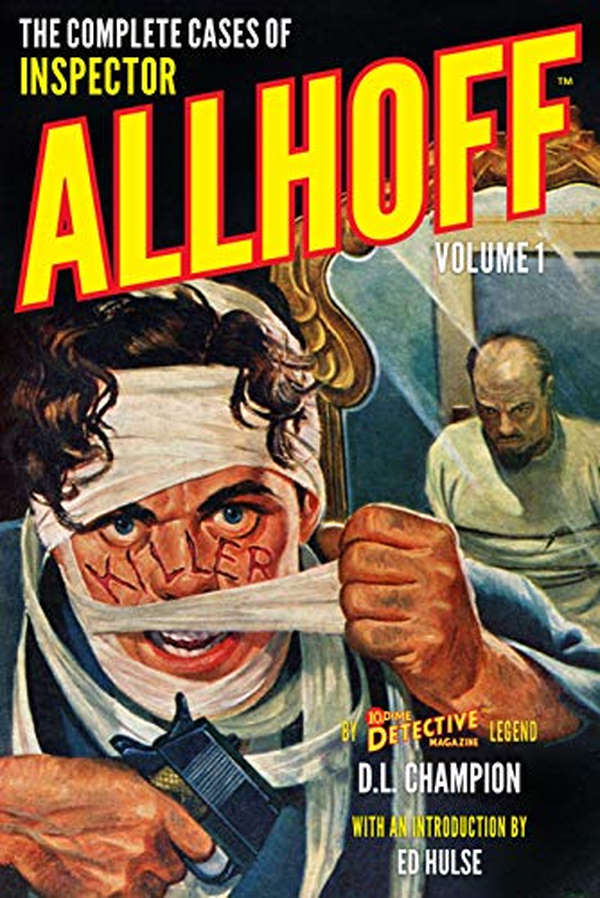
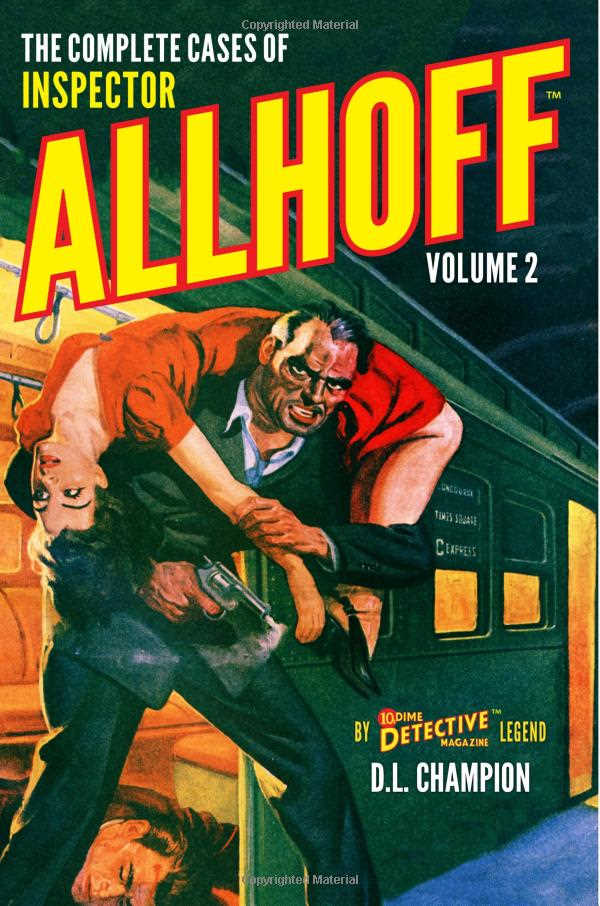
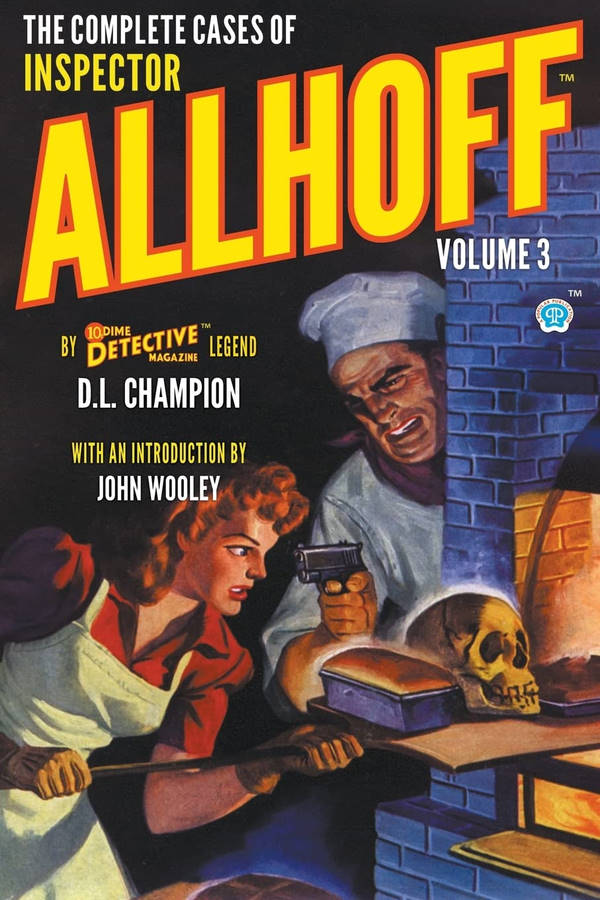
Pennsylvania born Walter Carl Brown (1893-??) saw success with his first book, The Second Guess, which sold on its first outing to a publisher. In a reversal of the usual path from magazines to books, he then was asked by publishers to write stories for magazines. His first story in Black Mask was bought by Fanny Ellsworth. It was Ken White, though, who bought his Sah-jin O’Hara series, set in Chinatown. A mythical Chinatown of concealed tunnels, white slaves, exotic oriental poisons and tortures, tongs and gang wars that existed only in the fevered imagination of pulp authors and their readers. The Parrot That Wouldn’t Talk is easily the worst of in this issue, with an implausible plot point that’s central to the story. Skip it.
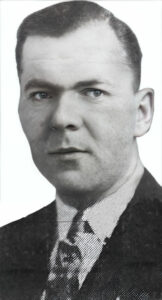
I found The Shadowy Line by Californian J. Lane Linklater moving. A gambler, newly arrived in Las Vegas, runs across a woman in a diner. She seems to be in trouble and after talking to her, he finds out she’s stuck with a no good gambling artist brother who’s gotten in debt to the wrong people. He helps her, staying out of trouble himself with some smart moves. In the final scene, he thinks twice about getting involved with her and gives her up after some soul-searching. More emotional depth than the usual pulp story. Worth reading.
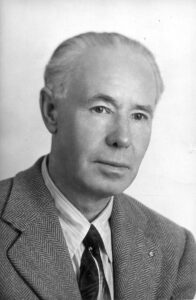
Linklater was the nom-de-plume of Alec Watkins. Watkins’ pseudonym was the maiden name of his mother, who disapproved of him yet collected his work as writing books was respectable and intellectual.
Linklater was, if not the black sheep of the family, at least a maverick. Where the rest of his family settled down in Oregon to farm, Watkins roamed around the US, doing a variety of odd jobs and lived a lifestyle that his family disapproved of.
Later in life, Watkins settled in Azusa, California and became a highly respectable citizen, serving as city treasurer, newspaper editor and reporter. He also wrote stories and books, creating a variety of oddball detectives like Silas Booth, a PI who makes crime pay by getting criminals to pay the bills (More here, here and here.). Whatever I’ve read of Linklater’s work has been consistently entertaining if not outstanding.
C. P. Donnel Jr.(1906-1977) was a crime reporter on the Norfolk Virginian-Pilot for a decade before switching to writing fiction. For Black Mask, he created Doc Rennie, who helps the country sheriff solve cases. Rennie is smart, the sheriff is trusted by the local people. A good combination that can’t save 5 shrieks at 10, a story of double trouble, psychological terror, mass hysteria and multiple suspects that’s too complicated for it’s size. Not one of Rennie’s better outings. Skip it.
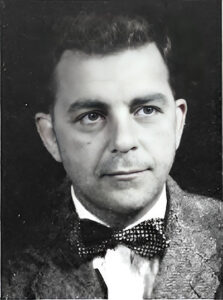
So What
At this point, Black Mask and Dime Detective’s contents look similar enough that they might have been the same title. This issue is a good, if not outstanding package. The stories from Reeves, Champion and Linklater are good, a refreshing mix of hardboiled and snappy screwball dialog that’s a welcome change from the endless hardboiled of the Shaw years and the dark stories in the Ellsworth era. I didn’t like The Parrot That Wouldn’t Talk, but it might have appealed to contemporary readers. The Doc Rennie story wasn’t good.
Would I have put down fifteen cents for it? Probably, but I might have come back next month and picked up Dime Detective instead, which was a nickel cheaper. Unless there was a Sackler story in next month’s issue.
Individual magazine circulations were not disclosed by Popular, so it’s hard to tell if the magazine was doing well on its own. But there are some signs that all wasn’t well. Sometime between 1943 and 1944 the page count dropped from 128 to 112 and then to 96 pages, blaming it on wartime restrictions. These 96 page issues are often plagued by print running into the gutters and misaligned text blocks on the pages, making them difficult to read.
Popular compensated by decreasing the font size so that there were 63 lines per column instead of 52; the result was a decrease in word count of about 10% overall. Ads reduced from 15-20 pages an issue to 8-10 pages. The price was still fifteen cents. Revenue was declining even if circulation stayed the same; costs were increasing as post-war inflation (20% in 1946) kicked in. They must have been struggling to make money at that price point.
How could they fix it?
Next week: The new Hard-boiled
As a reader and collector I’ve always considered Black Mask and Dime Detective in the 1940’s to be the same magazine. Same editor, same authors, similar illustrations and cover art, and similar style and humorous stories. Both magazines are quality efforts worth collecting.
In the SF genre, the same applied to Startling Stories and Thrilling Wonder during the decade of 1946-1955. Though one magazine stressed longer novels, both had the same editors(Sam Merwin and Sam Mines) and same authors. I’ve often wondered why some collectors only bother with one title when both magazines were so similar and enjoyable.
Walker,
I agree with you about Black Mask and Dime Detective being the same magazine under Ken White, up to a point. We’ll see what that point was next week.
I like Walker’s comment about Startling Stories and Thrilling Wonder as I have collected both for years.
Can’t go wrong with either of them. Fun reads, didn’t take themselves as seriously as Astounding, not as silly as Fantastic Adventures.